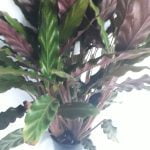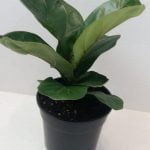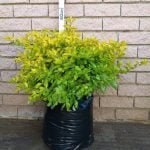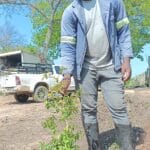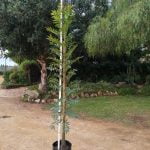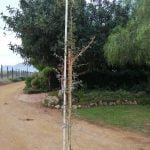Showing 2185–2196 of 2331 resultsSorted by popularity
- Sale!

Elegia Tectorum 20lt
Original price was: R650.00.R425.00Current price is: R425.00.Add to cartElegia Tectorum 20lt
Full Sun
Semi Shade
Water Wise
Evergreen - Sale!

Heart Leaf Philodendron 20cm Hanging Basket
Original price was: R245.00.R159.99Current price is: R159.99.Add to cartPhilodendron Scanden 20cm Hanging Basket
Common Name: Heart Leaf PhilodendronPhilodendron scandens, also known as heartleaf philodendron or sweetheart plant, is a popular indoor plant prized for its trailing vines and heart-shaped leaves. It belongs to the Araceae family and is native to the tropical regions of Central America and the Caribbean.
Heart-shaped leaves
As the common name suggests, the leaves of Philodendron scandens are heart-shaped, glossy, and typically dark green. The foliage may vary slightly in size and color depending on the specific variety.Trailing vines
This plant is known for its trailing growth habit, making it ideal for hanging baskets or climbing up supports. It can grow quite long if given the space and support to do so.Easy care
Philodendron scandens is relatively easy to care for, making it a popular choice for indoor gardeners, including beginners. It thrives in moderate to bright, indirect light but can tolerate lower light conditions. Avoid direct sunlight, as it can scorch the leaves.Watering
Allow the top inch or so of the soil to dry out between waterings. Overwatering can lead to root rot, so it’s essential to let the soil dry slightly before watering again. Ensure proper drainage in the pot to prevent waterlogged soil.Temperature and humidity
Philodendron scandens prefers temperatures between 18°C to 27°C and appreciates moderate to high humidity. If the air in your home is dry, you can increase humidity by misting the leaves, placing the plant on a humidity tray, or using a humidifier.Fertilising
During the growing season (spring and summer), fertilise Philodendron scandens monthly with a balanced houseplant fertiliser diluted to half strength. Reduce or stop fertilising during the fall and winter months when growth slows down. 
- Sale!

Ficus Lyrata Bambino 14cm
Original price was: R245.00.R129.99Current price is: R129.99.Add to cartFicus Lyrata Bambino 14cm Pot
Common Name: Dwarf Fiddle Leaf FigIndoor
Morning Sun
Shade
Low WateringFicus Lyrata is a wonderful indoor plant.
They need to be kept moist but not sitting in water. Water when top layer of soil is dry.
They enjoy a bright room and can tolerate morning sun only otherwise the leaves may burn.Ficus lyrata bambino, commonly known as the Bambino Fiddle Leaf Fig, is a smaller cultivar of the Ficus lyrata plant. It is a popular houseplant known for its attractive foliage and compact size.
Size and Appearance: Ficus lyrata bambino is a smaller version of the standard Ficus lyrata plant. It features large, leathery leaves that are shaped like a fiddle or violin, similar to its larger counterpart. The leaves have prominent veins and a glossy, dark green colour.
Size and Growth Habit: Bambino Fiddle Leaf Fig typically grows to a height of around 60-90cm and has a bushier growth habit compared to the standard Ficus lyrata. Its compact size makes it ideal for smaller spaces such as apartments or offices.
Lighting Requirements: Ficus lyrata bambino thrives in bright, indirect light. It should be placed near a window with filtered sunlight or in a well-lit room. Avoid exposing it to direct sunlight, as it can scorch the leaves.
Temperature and Humidity: This plant prefers average room temperatures between 15-24°C. It appreciates moderately humid environments, so misting the leaves or placing a tray of water nearby can help increase humidity.
Watering: It’s important to maintain consistent moisture for Ficus lyrata bambino, but be cautious not to overwater. Allow the top inch (2.5 cm) of soil to dry out before watering again. Ensure proper drainage, as the plant doesn’t like to sit in water.
Soil and Fertiliser: Well-draining, loamy soil is recommended for this plant. A mixture of peat moss, perlite, and potting soil can provide good drainage. Fertilise the plant every two to four weeks during the growing season (spring and summer) with a balanced, water-soluble fertiliser.
Pruning and Maintenance: Prune the Bambino Fiddle Leaf Fig to maintain its compact shape and remove any damaged or yellowing leaves. Regularly dust the leaves to keep them clean and ensure proper photosynthesis.
Potential Challenges: Ficus lyrata bambino is generally considered a relatively low-maintenance plant. However, it can be susceptible to common houseplant pests such as spider mites or mealybugs. Regularly inspect the leaves and treat any pest infestations promptly.
- Sale!

Tecoma Capensis 10lt Orange
All Plants, Full Sun Plants, Hedging Plants, Indigenous Plants, Semi Shade Plants, Water Wise PlantsOriginal price was: R250.00.R150.00Current price is: R150.00.Add to cartTecoma Capensis 10lt Orange
Common Name: Cape Honey SuckleFull Sun
Afternoon Sun
Low Watering
Evergreen - Sale!

Tecoma Capensis 10lt Big Red
All Plants, Full Sun Plants, Hedging Plants, Indigenous Plants, Semi Shade Plants, Water Wise PlantsOriginal price was: R250.00.R180.00Current price is: R180.00.Add to cartTecoma Capensis 10lt Big Red
Common Name: Cape Honey SuckleFull Sun
Afternoon Sun
Low Watering
Evergreen - Sale!

Duranta Sheenas Gold 20lt
All Plants, Blast From The Past Plant Prices (Outdoor), Full Sun Plants, Hedging Plants, Semi Shade PlantsOriginal price was: R550.00.R295.00Current price is: R295.00.Add to cartDuranta Sheenas Gold 20lt
Common Name: Golden DewdropFull Sun
Semi Shade
Nice for Hedging or Stand Alone
Medium Watering
Wind Tolerant
EvergreenDuranta ‘Sheena’s Gold,’ also known as Duranta erecta ‘Sheena’s Gold,’ is a cultivar of Duranta erecta, an evergreen shrub or small tree native to tropical regions of the Americas. Duranta ‘Sheena’s Gold’ is widely grown as an ornamental plant for its attractive golden foliage and its ability to add colour and texture to landscapes.
Appearance: Duranta ‘Sheena’s Gold’ is a compact, fast-growing shrub that can reach a height of 1 to 2m. It has a dense, bushy growth habit with arching branches.
Foliage: The most notable characteristic of Duranta ‘Sheena’s Gold’ is its striking golden-yellow foliage. The leaves are small, ovate to elliptical in shape, and have a bright golden-yellow colour. The vibrant foliage provides a beautiful contrast against the deep green stems and other plants in the landscape.
Flowers: Like other Duranta varieties, ‘Sheena’s Gold’ produces small, lavender-blue or purple flowers in clusters during the growing season. While the flowers are not the primary attraction of the plant, they do add some additional colour and interest.
Growth Requirements: Duranta ‘Sheena’s Gold’ thrives in full sun to partial shade and prefers well-draining soil. It is relatively drought-tolerant once established, but regular watering is beneficial, especially during dry periods.
Uses: Duranta ‘Sheena’s Gold’ is commonly used as a hedge, accent plant, or specimen in gardens and landscapes. Its golden foliage makes it an eye-catching addition to mixed borders, tropical-themed gardens, or any area where a splash of vibrant colour is desired.
Toxicity: As with other Duranta varieties, the berries of ‘Sheena’s Gold’ can be toxic if ingested, so it’s essential to exercise caution, especially if there are children or pets in the area.
Due to its compact size and striking appearance, Duranta ‘Sheena’s Gold’ is a popular choice for gardeners and landscapers looking to add visual interest and colour to their outdoor spaces.
- Sale!

Dovyalis Caffra (Kei Apple) 10lt
All Plants, Full Sun Plants, Hedging Plants, Indigenous Plants, Semi Shade Plants, Water Wise PlantsOriginal price was: R295.00.R179.99Current price is: R179.99.Add to cartDovyalis Caffra 10lt
Common Name: Kei AppleFull Sun
Semi Shade
Evergreen
medium Watering
Indigenous
Hedging PlantDovyalis caffra, commonly known as the Kei Apple or Kaffir Plum, is a small to medium-sized tree native to southern Africa. It belongs to the Flacourtiaceae family. The Kei Apple is valued for its edible fruits and is also cultivated as an ornamental plant.
Appearance: The Kei Apple is an evergreen tree with a dense, rounded crown. It can grow up to 4-6m in height and has thorny branches.
Leaves: The leaves are glossy, dark green, and elliptical in shape, with prominent veins. They are often serrated or toothed along the edges.
Flowers: The tree produces small, inconspicuous, and greenish-yellow flowers that are not particularly showy. They are typically dioecious, meaning male and female flowers are borne on separate trees.
Fruits: The Kei Apple is most known for its plum-sized, round to ovoid fruits, which are edible and have a sweet and tangy flavour. The fruits ripen to a yellowish colour when fully mature and can be eaten fresh or used to make jams, jellies, and sauces.
Growth Requirements: Dovyalis caffra prefers well-draining soil and can tolerate a range of soil types. It grows best in full sun but can also tolerate partial shade. The tree is relatively drought-tolerant once established, but regular watering can help improve fruit production.
Wildlife Attraction: The fruits of the Kei Apple are not only enjoyed by humans but also attract birds and other wildlife, making it a valuable addition to gardens and landscapes that support local biodiversity.
Uses: Apart from its culinary uses, the Kei Apple is sometimes used as a hedge or barrier plant due to its thorny nature. In some regions, the tree is also used for erosion control.
- Sale!

Dovyalis Caffra Tree (Kei Apple) 20lt
All Plants, Full Sun Plants, Hedging Plants, Indigenous Plants, Semi Shade Plants, Water Wise PlantsOriginal price was: R550.00.R350.00Current price is: R350.00.Add to cartDovyalis Caffra Tree 20lt
Common Name: Kei AppleFull Sun
Semi Shade
Evergreen
medium Watering
Indigenous
Hedging PlantDovyalis caffra, commonly known as the Kei Apple or Kaffir Plum, is a small to medium-sized tree native to southern Africa. It belongs to the Flacourtiaceae family. The Kei Apple is valued for its edible fruits and is also cultivated as an ornamental plant.
Appearance: The Kei Apple is an evergreen tree with a dense, rounded crown. It can grow up to 4-6m in height and has thorny branches.
Leaves: The leaves are glossy, dark green, and elliptical in shape, with prominent veins. They are often serrated or toothed along the edges.
Flowers: The tree produces small, inconspicuous, and greenish-yellow flowers that are not particularly showy. They are typically dioecious, meaning male and female flowers are borne on separate trees.
Fruits: The Kei Apple is most known for its plum-sized, round to ovoid fruits, which are edible and have a sweet and tangy flavour. The fruits ripen to a yellowish colour when fully mature and can be eaten fresh or used to make jams, jellies, and sauces.
Growth Requirements: Dovyalis caffra prefers well-draining soil and can tolerate a range of soil types. It grows best in full sun but can also tolerate partial shade. The tree is relatively drought-tolerant once established, but regular watering can help improve fruit production.
Wildlife Attraction: The fruits of the Kei Apple are not only enjoyed by humans but also attract birds and other wildlife, making it a valuable addition to gardens and landscapes that support local biodiversity.
Uses: Apart from its culinary uses, the Kei Apple is sometimes used as a hedge or barrier plant due to its thorny nature. In some regions, the tree is also used for erosion control.
- Sale!

Ekebergia Capensis 20lt
Original price was: R550.00.R399.99Current price is: R399.99.Add to cartEkebergia Capensis 20lt
Common Names: Cape Ash, Dogplum, EssenhoutFull Sun
Low Watering
Indigenous
Evergreen
Drought Tolerant When EstablishedEkebergia capensis, commonly known as the Cape ash or African ash, is a tree species native to South Africa.
Habitat: Ekebergia capensis is found in various parts of South Africa, including the Cape Peninsula, Eastern Cape, KwaZulu-Natal, Mpumalanga, and Limpopo. It typically grows in woodland and forest habitats, often near rivers or in moist areas.
Description: It is a medium-sized to large deciduous tree that can reach heights of up to 20 meters. The tree has a dense, rounded crown and a straight trunk. The bark is greyish-brown and becomes rough and fissured as the tree matures. The leaves are compound, with leaflets arranged in pairs, and they are shiny dark green in colour.
Flowers and Fruits: Ekebergia capensis produces small, creamy-white flowers in dense clusters. The flowers are fragrant and attract bees and other insects for pollination. After pollination, the tree develops small, round fruits that turn purple when ripe. The fruit contains a single seed and is edible, but not commonly consumed by humans.
Uses: Ekebergia capensis has several uses in traditional medicine and cultural practices. Various parts of the tree, such as the bark, leaves, and roots, are used for their medicinal properties. The wood is durable and used in construction, furniture making, and for fuel. The tree also has some cultural significance and is often planted as an ornamental tree in gardens and public spaces.
Conservation status: Ekebergia capensis is not currently listed as a threatened species. However, like many tree species, it can face threats from habitat loss, deforestation, and invasive species. Conservation efforts are important to preserve the natural habitats where this tree species occurs.

Acacia Sieberiana (Paperbark) 20lt
R495.00Add to cartAcacia Sieberiana 20lt
Common Name: Paperbark TreeAcacia/Vachellia sieberiana var. woodii, commonly known as the paperbark thorn, is a tree species within the Fabaceae family.
Botanical Characteristics
Leaves: The paperbark thorn has bipinnate leaves, which are typical of many Acacia species. The leaflets are small, giving the leaves a fine, feathery appearance.
Bark: As the common name suggests, the bark of this tree is papery and peels off in thin flakes. It is usually a creamy white to light brown colour.
Thorns: The tree features paired white thorns at the base of the leaves, which are straight and can be quite sharp.
Flowers: It produces small, spherical, yellow to creamy-white flower clusters that are fragrant and attract various pollinators.
Fruit: The tree bears elongated, flattened pods that contain seeds. The pods are typically a light brown colour when mature.Growing Conditions
Climate: Paperbarks thrive in warm, tropical to subtropical climates and is commonly found in savannas and open woodland areas.
Soil: It prefers well-drained soils but is adaptable to a range of soil types, including sandy and loamy soils.
Watering: This species is drought-tolerant, making it well-suited to areas with seasonal rainfall.Ecological Role
Habitat: The paperbark thorn is an important species in its native habitat, providing shelter and food for various wildlife, including insects, birds, and mammals.
Nitrogen Fixation: Like many legumes, it has a symbiotic relationship with nitrogen-fixing bacteria in its root nodules, which helps enrich the soil with nitrogen.Uses
Timber: The wood is hard and durable, used for construction, furniture, and tools.
Traditional Medicine: Various parts of the tree are used in traditional medicine to treat ailments such as coughs, colds, and skin infections.
Fodder: The leaves and pods are a source of food for livestock during dry seasons.
Gum: The tree exudes a gum that can be used similarly to gum arabic.Nutritional and Health Benefits
Herbal Remedies: Traditional uses include the treatment of respiratory and gastrointestinal issues, due to the antimicrobial properties of the plant extracts.
Anti-inflammatory: The bark and leaves have been used in poultices to reduce inflammation and promote healing of wounds.Cultivation and Management
Propagation: The tree is typically propagated from seeds, which often require pre-treatment such as soaking or scarification to enhance germination.
Growth Rate: It has a moderate to fast growth rate, particularly in favourable conditions with adequate water and nutrients.
Management: Pruning may be necessary to manage its thorny branches and to shape the tree for aesthetic or practical purposes.Conservation and Environmental Importance
Soil Conservation: Its deep root system helps prevent soil erosion, making it valuable in stabilizing soil in its native range.
Biodiversity: It supports biodiversity by providing habitat and food for a variety of organisms.Acacia/Vachellia sieberiana var. woodii is a versatile and ecologically significant tree, playing a crucial role in its natural habitat while offering numerous benefits for human use and environmental sustainability.

Acacia Burkei 20lt (Black Monkey Thorn)
R495.00Add to cartAcacia Burkei 20lt
Common Name: Black Monkey ThornApprox 2.2m Tall



